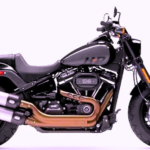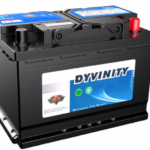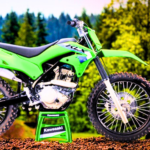What Is a Stationary Bike Speedometer?
A stationary bike speedometer is an instrument designed to track your cycling data while you ride indoors. The basic purpose of a speedometer is to measure your pedaling speed, but modern versions can also display additional metrics.
including distance, time, calories burned, and even heart rate. Advanced models may also track power output, cadence, and sync with fitness apps for a more comprehensive analysis of your performance.
Why You Should Use a Stationary Bike Speedometer
A stationary bike speedometer offers numerous advantages for anyone looking to maximize their workout. Whether you’re a fitness enthusiast, a casual rider, or a competitive cyclist, this device provides valuable.
data that helps you track your efforts, set goals, and improve over time. Let’s take a closer look at the benefits:
- Monitor Your Improvement A speedometer allows you to easily track how fast you are cycling, how far you’ve ridden, and how long you’ve been working out. By consistently recording this data, you can see your progress, which helps keep you motivated. Whether you want to ride longer distances or go faster, monitoring your progress makes it easier to set realistic targets.
- Stay on Top of Your Effort In addition to measuring speed, many stationary bike speedometers also track your heart rate, calorie expenditure, and power output. This gives you a clearer idea of how intense your workout is. For instance, monitoring your heart rate ensures you are staying within your target zone to improve cardiovascular health or burn fat efficiently.
- Support Your Training Serious cyclists or those training for a specific event can benefit from the detailed metrics that a speedometer provides. For example, knowing your cadence (pedal rotations per minute) or power output (in watts) can help you fine-tune your riding technique and improve your overall performance.
- Stay Motivated There’s nothing quite like seeing your metrics improve with each ride. Whether you’re trying to break your personal speed record or hit a specific distance, having visible results is incredibly motivating. For those preparing for cycling events, a speedometer offers valuable feedback that can increase confidence and drive.
Key Features to Look for in a Stationary Bike Speedometer
Not all stationary bike speedometers are the same. Depending on the model, you may find a variety of features that suit different training needs. Here are some common features you might want to consider:
- Speed Measurement The primary function of any speedometer is to track your speed. Most models will display your cycling speed in miles per hour (mph) or kilometers per hour (km/h). This allows you to adjust your intensity and workout plan according to your speed goals.
- Distance Tracking Along with speed, distance is a crucial metric. Knowing how far you’ve ridden is helpful for endurance training. Stationary bike speedometers typically track distance in miles or kilometers and give you a sense of how much you’ve accomplished during each session.
- Time Tracking A speedometer also tracks the duration of your ride, which is especially useful for anyone aiming to gradually increase workout length. You can also set time-based goals or monitor how much time you’ve spent in different heart rate zones for a more effective training session.
- Calories Burned Many stationary bike speedometers include an estimation of the calories burned during your ride. While the exact number can vary based on intensity and personal factors like weight and metabolism, this feature can give you a rough idea of the energy you’re expending. It’s especially useful for those focusing on weight loss.
- Heart Rate Monitoring Heart rate tracking is essential for assessing the intensity of your workout. Some speedometers feature built-in heart rate sensors or are compatible with external devices like chest straps or wristbands. Monitoring your heart rate helps ensure that you’re riding at the right intensity to achieve your fitness goals.
- Cadence and Power For more experienced riders, cadence (the speed of pedaling) and power (measured in watts) are essential metrics. Cadence helps you maintain efficient pedaling technique, while power tracking gives you insight into the effort you’re putting into your ride. These metrics are especially important for those training for performance-based cycling.
- Connectivity Features Many modern speedometers come with Bluetooth or other connectivity features, allowing you to sync your data with fitness apps such as Strava, Zwift, or Peloton. This makes it easy to track your progress over time, join virtual cycling classes, or even compete against other riders.
How to Choose the Right Stationary Bike Speedometer
Choosing the right stationary bike speedometer depends on several factors, such as your fitness goals, preferred features, and budget. Here are some tips to guide your decision:
- Assess Your Fitness Goals Are you a beginner just looking to track speed and distance? Or are you a seasoned cyclist seeking in-depth metrics like cadence, power, and heart rate? More advanced features often come with a higher price tag, so understanding what you truly need is essential to making the right choice.
- Consider App Compatibility If you’re someone who enjoys using fitness apps or likes to track your performance digitally, look for a speedometer that offers Bluetooth or Wi-Fi connectivity. This feature enables you to sync your bike’s data with apps such as Zwift, Peloton, or Strava, allowing for more in-depth performance tracking.
- Check the Display The display should be large and clear enough to read while you’re cycling. Many devices now offer backlit screens to ensure readability in low-light conditions. It’s important that the interface is easy to navigate so you can adjust settings and read your data without distractions.
- Set Your Budget Speedometers come in a wide range of prices. Basic models can be quite affordable, while more advanced versions with additional features can be costly. Decide what features are important to you, and stick to your budget.
- If you’re just looking for basic data like speed and distance, there’s no need to splurge on a high-end model.
- Check Compatibility Ensure that the speedometer is compatible with your stationary bike. Some models may require sensors to be installed on the flywheel or wheels, while others are designed to mount directly on the handlebars. Make sure the speedometer fits your bike setup and is easy to install.
Conclusion
A stationary bike speedometer is a great way to enhance your indoor cycling workouts. By tracking key metrics like speed, distance, time, calories burned, and heart rate, you can monitor your progress.
stay motivated, and achieve your fitness goals more effectively. Whether you’re training for an event or just looking to stay healthy, a speedometer can help you get the most out of every ride.
When choosing a speedometer, consider the features that matter most to you—whether it’s heart rate monitoring, cadence, power tracking, or app compatibility.
By investing in the right device, you’ll have the tools to track your performance and improve with each session.






